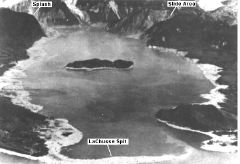How do landslides, volcanic eruptions, and cosmic collisions generate tsunamis?
A tsunami can be generated by any disturbance that displaces a large water mass from its equilibrium position. In the case of earthquake-generated tsunamis, the water column is disturbed by the uplift or subsidence of the sea floor. Submarine landslides, which often accompany large earthquakes, as well as collapses of volcanic edifices, can also disturb the overlying water column as sediment and rock slump downslope and are redistributed across the sea floor. Similarly, a violent submarine volcanic eruption can create an impulsive force that uplifts the water column and generates a tsunami. Conversely, supermarine landslides and cosmic-body impacts disturb the water from above, as momentum from falling debris is transferred to the water into which the debris falls. Generally speaking, tsunamis generated from these mechanisms, unlike the Pacific-wide tsunamis caused by some earthquakes, dissipate quickly and rarely affect coastlines distant from the source area.

This image shows Lituya Bay, Alaska, after a huge, landslide-generated tsunami occurred on July 9, 1958. The earthquake-induced rockslide, shown in upper right-hand corner of this image, generated a 525 m splash-up immediately across the bay, and razed trees along the bay and across LaChausse Spit before leaving the bay and dissipating in the open waters of the Gulf of Alaska. Source: Lander, and P. Lockridge






